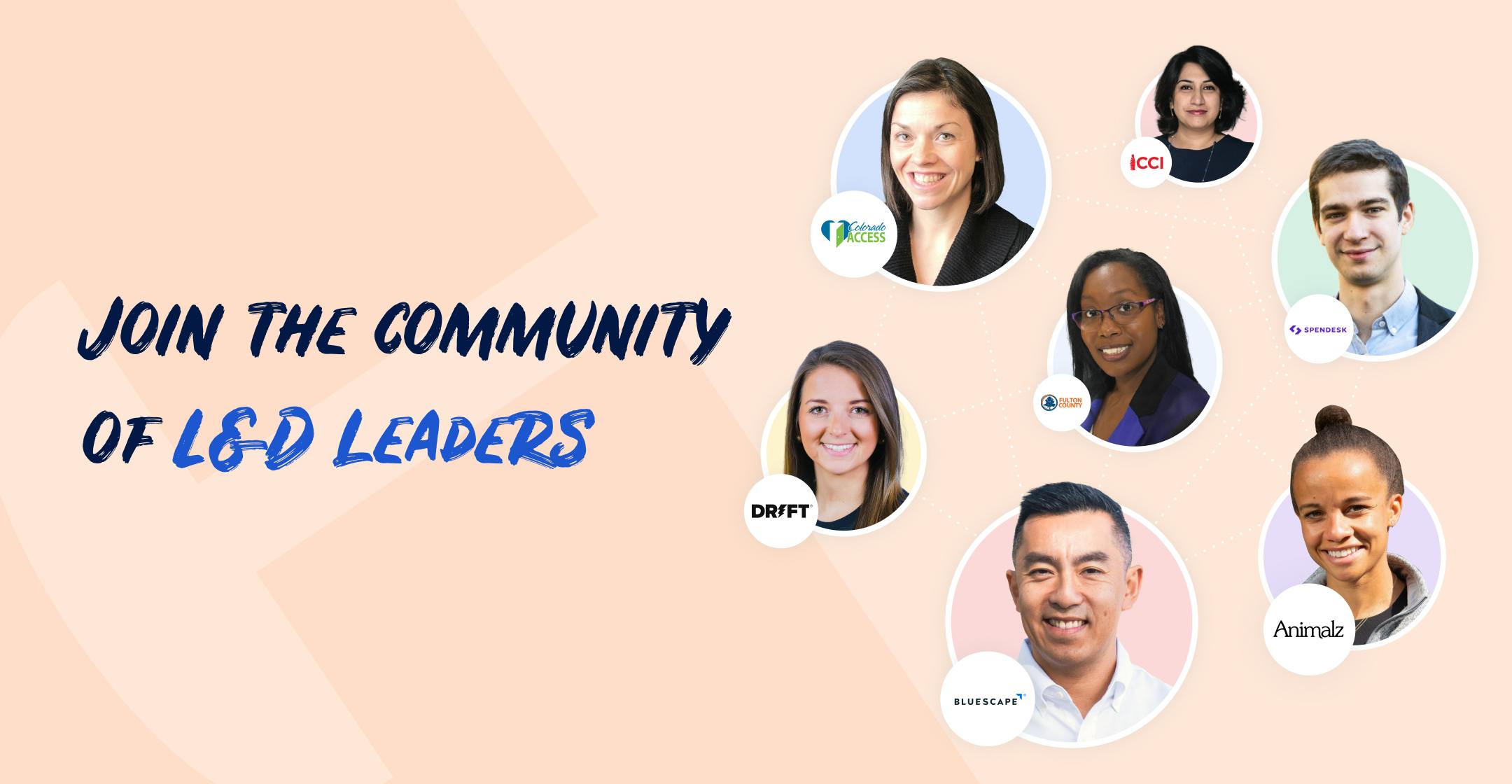
The corporate world is heading towards a significant pivot as skills-based organizational models gain prominence.
Today’s skills spotlight comes as no surprise as industries and economies proactively seek to solve the growing skills gap, with most companies worldwide—87 percent—recognizing that they either already have a skills gap, or will have one within a few years.
In this episode of The Learning and Development Podcast, I speak with Gabe Gloege, a leading voice in modern L&D and co-founder of CultivateMe, about what a skills-based approach means for L&D and our stakeholders and how we can get involved.
Read on to learn more about what makes a skills-based organization, Gabe’s framework for a skills-based approach to L&D, and the power of AI in skills-based development.
Defining a skills-based organization
A skills-based organization (SBO) is where work and talent structures are focused and organized around skills rather than traditional job roles.
“Learning and development efforts are often organized around roles, so the thinking goes that these will be driven by skills more than roles,” he says. “The notion is that roles will dissolve as a meaningful structure within organizations and skills ontologies will replace them as an organizing principle.”
In Gabe’s experience, the promise of SBOs is that talent flow will increase, resulting in a more agile organization.
Related: Goodbye Jobs, Hello Skills: The Fundamental Shift Reshaping the Way We Think About Talent
Why the fundamental change in approach now?
A big reason for the shift to a skills-based approach, Gabe finds, is the increased demand for career development driven by the labor force.
“Once some of the basic needs are met regarding compensation and healthcare, people seek career progression,” Gabe explains. “People are looking for organizations that can invest in them and where they feel they can build on their skills set.”
Additionally, technological advances are driving the shift, with AI promising to make structuring skills-based organizations more practical.
“Skills are a rabbit hole of semantics, and AI has reached a critical point where it’s an intellectual labor saver in finding patterns and generating the volumes of text required to effectively document, communicate, and process the language of skills,” Gabe says.
Skills are a rabbit hole of semantics, and AI has reached a critical point where it’s an intellectual labor saver in finding patterns and generating the volumes of text required to effectively document, communicate, and process the language of skills.

Skills are nothing without the right culture.
By providing your contact info, you agree to receive communications from 360Learning. You can opt-out at any time. For details, refer to our Privacy Policy.
Breaking free from the pigeonhole
Gabe finds that skills-based organizations add a new linguistic layer of recognizing and discussing underlying skills that can be transfered into different roles.
“I do think the concept of jobs has pigeonholed people in many ways,” he says, “So, I'm excited that we can start disaggregating that a bit and separate roles from souls.”
I do think the concept of jobs has pigeonholed people in many ways. So, I'm excited that we can start disaggregating that a bit and separate roles from souls.
However, Gabe foresees L&D running into a lot of the same challenges we’ve had with skills, in particular, the definition of a skill. “A lot of the problems we experienced with the trends of the past are still going to rear their head,” he says.
Gabe’s framework for skills-based learning
Gabe’s framework has become a practical and pragmatic approach that informs skills-based learning for him and his team.
Dual nature of human cognition
First, you need to understand the dual nature of human cognition: everyone has a right brain and a left brain.
“The right brain is really about full embodied experience. Everything is coming in, but you're not processing it. This is the terrain for learning,” Gabe explains. “The left brain is about focused attention. It’s where things get abstracted. So, you could say that it’s the map for learning.”
Application to workplace learning
Over the years, Gabe has applied the dual nature of cognition to the language of workplace learning, breaking it down into activities and skills.
Activities: These are analogous to the right brain’s ‘terrain.’ These are the tangible tasks people do daily, and combined, they make up a job.
Skills: These are related to the left brain’s ‘map.’ Skills are abstracted facets of an activity you wouldn’t put on a to-do list, such as active listening.
“Where skills fall short is when we talk about them without context,” he says. “The big lesson for approaching skills-based learning is always to discuss the activity and the skill.”
Where skills fall short is when we talk about them without context. The big lesson for approaching skills-based learning is always to discuss the activity and the skill.
The application to learning
People don't learn from abstraction, Gabe explains, but by having experiences and engaging with concrete situations.
“My experience of leveraging skills to increase learning is to stop talking about skills at the outset,” he says. “Instead, talk about the real work, case studies, tasks, and how to solve them. After introducing some of that concrete activity, you can have the conversation to help people abstract the various skill-based facets of that activity.”
Related: Skills-Based Learning: Our 5-Step Blueprint to Make the Shift and Unlock Your Talent
AI power in skills-based development
The significant risk Gabe cautions L&D practitioners against when leveraging generative AI is to outsource our thinking.
Instead, as L&D practitioners, if we do the first principles thinking of the job to be done or the problem to be solved and provide generative AI with the right context, it can fill in the stuff that would have taken us hours and hours to write.
For example, Gabe leverages generative AI to create skills frameworks for roles. He will ask AI to:
- Identify the five deliverables of a particular job.
- Identify the five activities required to deliver each of those deliverables.
- Identify the top ten skills cutting across all those activities.
“So, you end up with 35 things–25 activities and ten skills–that enable someone to make sense of their job,” he says. “Providing that structure to something like ChatGPT to fill in the blanks can save you hours.”
Thanks to Gabe for sharing his insights with us! Check out our episode with Ross Stevenson about leveraging generative AI as your L&D research and thought partner or Laura Overton on applying the lessons learned from the latest CIPD Learning at Work report.
Want more peer insights on transforming workplace learning? Sign up to become a member of the L&D Collective, and check out our other #CLOConnect interviews with top L&D leaders on driving growth and scaling culture through Collaborative Learning. Or you can subscribe (below 👇) to our weekly newsletter to receive our latest posts directly in your inbox.





